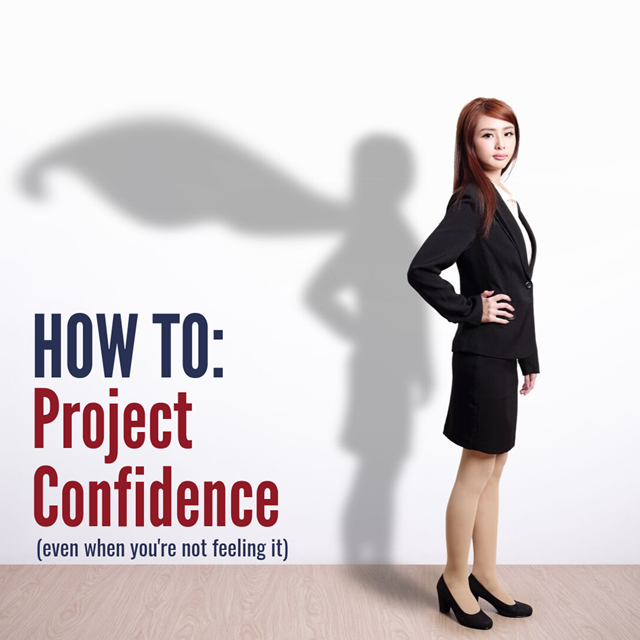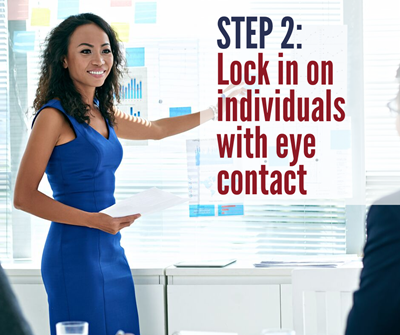
"Mirror, mirror on the wall, Don't tell me 'cause I know I'm cute."
– Lizzo projecting confidence in "Juice"
One of the top requests we get from speakers who come to our public speaking courses is this one: Please help me project more confidence.
Like everything about becoming an outstanding speaker, how you project confidence depends on individual style. But there are steps all of us can take to appear more in command, and these can be especially useful if you're feeling a little shaky.
We know from experience: When a speaker knows how to appear confident, the audience rarely picks up on how the speaker truly feels. And when someone who IS at ease avoids eye contact, rushes, or fidgets, they wind up appearing less confident than they are.
Here's how to project confidence when you present, whether you're feeling it or not.

Step 1: Walk up with energy
When you're stepping up on a stage to make a speech to hundreds or moving to the front of the room for a presentation to a few, assume all eyes are on you from the moment you leave your seat. Don't walk up as if you're headed to your doom. Instead, get some spring in your step and make an energetic approach to your starting position.

Step 2: Make locking, individualized eye contact
Your eye contact is one way to signal that you’re ready to meet the audience. Resist the urge to avoid them by staring down too long at notes or keeping your eyes at your feet or over their heads. Instead of scanning the room side to side, like a lawn sprinkler, find one person and establish locking eye contact. Then move to another individual in another part of the room. If you're feeling nervous, start with friendly faces and work up to the more challenging people.

Step 3: Slow down
A confident speaker doesn't race through material. A confident speaker is comfortable with silent pauses. Particularly when you're feeling nervous, control your pace—and for most speakers, that means slowing down. You should:
- present most of your material at a comfortable rate, looking for opportunities to surge or pull back, depending on the points you're making
- pause if you ask a rhetorical question or make a major point
- pause as you move from one idea to the next
Not only will you seem more confident, your message will be easier to follow.

Step 4: Channel your energy into deliberate movement
Gestures and body language are great ways to channel nerves, avoid appearing stiff, and show your confidence. The key is to be deliberate. Movements should support and illustrate your message. Keeping your body relaxed but still between these descriptive movements shows your control and helps you avoid nervous fidgeting.
Fake-it-until-you-make-it works!
For nervous speakers, the first few minutes are usually the most difficult. By knowing how to appear confident, a speaker can move through those minutes more quickly and do so without the audience ever knowing that nerves are an issue.
Learn more:
For tips on how to use gestures in presentations, here's this.
Bring more confidence to seated presentations, using this advice.
For help with public speaking nerves, consider these tips.
Some ideas on how your self-talk can create a more confident mindset.






